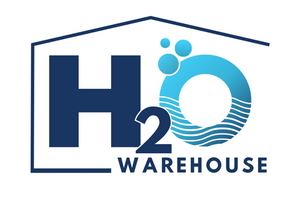Understanding the Maximum Suction Depth for Wellpoints
Understanding the Maximum Suction Depth of Surface Centrifugal and Jet Pumps for Wellpoints
When installing a pump for a wellpoint system, understanding the maximum depth from which the pump can effectively draw water is crucial. This depth influences how deep your wellpoint can be installed and impacts the efficiency and longevity of your pump system. In this article, we explore the theoretical and practical limits of suction depth, compare surface centrifugal and jet pumps, provide a detailed explanation of how jet pumps work, and outline best practices for optimising your pumping setup.
Theoretical Maximum Suction Depth
Both surface centrifugal and jet pumps rely on atmospheric pressure to push water into the pump chamber when suction is created. Under ideal conditions at sea level, the maximum theoretical suction lift is approximately 10.3 metres. This figure is based on the atmospheric pressure at sea level (101.3 kPa), which can push a column of water up to 10.3 metres high in a perfect vacuum.
However, real-world applications involve factors such as friction losses, vapour pressure, and pump inefficiencies, which reduce this maximum depth.
Practical Suction Depth
Surface Centrifugal Pumps
In practical conditions, most surface centrifugal pumps can lift water from a depth of 6 to 7 metres. This range considers:
-
Friction Losses: Losses occur in the suction pipe, fittings, and valves, reducing actual lifting capacity.
-
Vapour Pressure and Cavitation: Cavitation occurs if pressure in the suction line drops below the water’s vapour pressure, potentially damaging the pump.
-
Altitude Adjustments: Atmospheric pressure decreases with altitude; for every 1,000 metres above sea level, the available suction lift reduces by approximately 1 metre.
-
Water Temperature: Higher water temperatures increase vapour pressure, reducing effective suction depth.
Jet Pumps
Jet pumps are specifically designed to overcome the limitations of surface centrifugal pumps. They combine suction and pressure, enabling them to achieve greater suction depths, typically up to 12 metres. Jet pumps are ideal for:
-
Deeper Wellpoints: Where centrifugal pumps cannot achieve the necessary lift.
-
High-Lift Applications: Where maintaining consistent pressure is essential.
How Jet Pumps Work
Jet pumps operate using a unique mechanism involving a nozzle and venturi tube. Here’s a detailed breakdown of the process:
-
Water Recirculation: The pump recirculates a portion of the pumped water back through a nozzle in the jet assembly. This nozzle converts the water’s pressure into high velocity, creating a vacuum.
-
Vacuum Creation: The vacuum draws water from the wellpoint into the jet assembly. The high-velocity water from the nozzle mixes with the incoming water.
-
Pressure Conversion: The mixed water flows through a venturi tube, where velocity is reduced and pressure is increased, allowing the pump to push the water to the surface.
-
Continuous Operation: This process continuously draws water from deeper levels, enabling jet pumps to lift water from greater depths than centrifugal pumps.
Jet pumps can be configured as:
-
Shallow Well Jet Pumps: Suitable for depths up to 8 metres, with the jet assembly integrated into the pump.
-
Deep Well Jet Pumps: Suitable for depths up to 12 metres or more, with the jet assembly installed in the well, allowing for higher suction capacity.
Key Factors Influencing Suction Depth
-
Pump Location
Place the pump as close to the water source as possible to minimise suction pipe length. -
Pipe Sizing and Material
Use appropriately sized suction pipes and minimise bends and fittings to reduce friction losses. -
Foot Valves and Strainers
Install high-quality foot valves and strainers to prevent debris from entering the system and maintain prime. -
Priming the Pump
Properly prime the pump before operation to avoid air pockets that impede suction. -
Vacuum Integrity
Check for air leaks in suction lines and fittings, as minor leaks can significantly reduce suction capacity.
Choosing Between Centrifugal and Jet Pumps
-
Opt for a Centrifugal Pump if the wellpoint depth is within 6 to 7 metres and the application requires consistent, moderate water flow.
-
Choose a Jet Pump if the wellpoint depth exceeds 7 metres or if the application demands higher pressure and flow over greater depths.
Optimising Pump Performance for Wellpoints
-
Regular Maintenance: Inspect seals, impellers, and bearings to ensure optimal performance.
-
Proper Sizing: Match the pump size to application requirements for flow rate and head.
-
Monitor Operating Conditions: Use pressure gauges and performance indicators to detect issues early.
Conclusion
While surface centrifugal pumps have a practical suction depth limit of about 6 to 7 metres, jet pumps can extend this capability to depths of up to 12 metres. Understanding how jet pumps operate, with their nozzle and venturi design, highlights their suitability for deeper wellpoint systems and applications requiring consistent pressure.
For deeper installations and complex applications, jet pumps provide a robust alternative to centrifugal pumps.
If you are uncertain about the best pump for your application, H2O Warehouse offers expert advice and tailored solutions for all your water-related needs. Contact us today for professional guidance and superior water products delivered to your doorstep.
- Choosing a selection results in a full page refresh.

